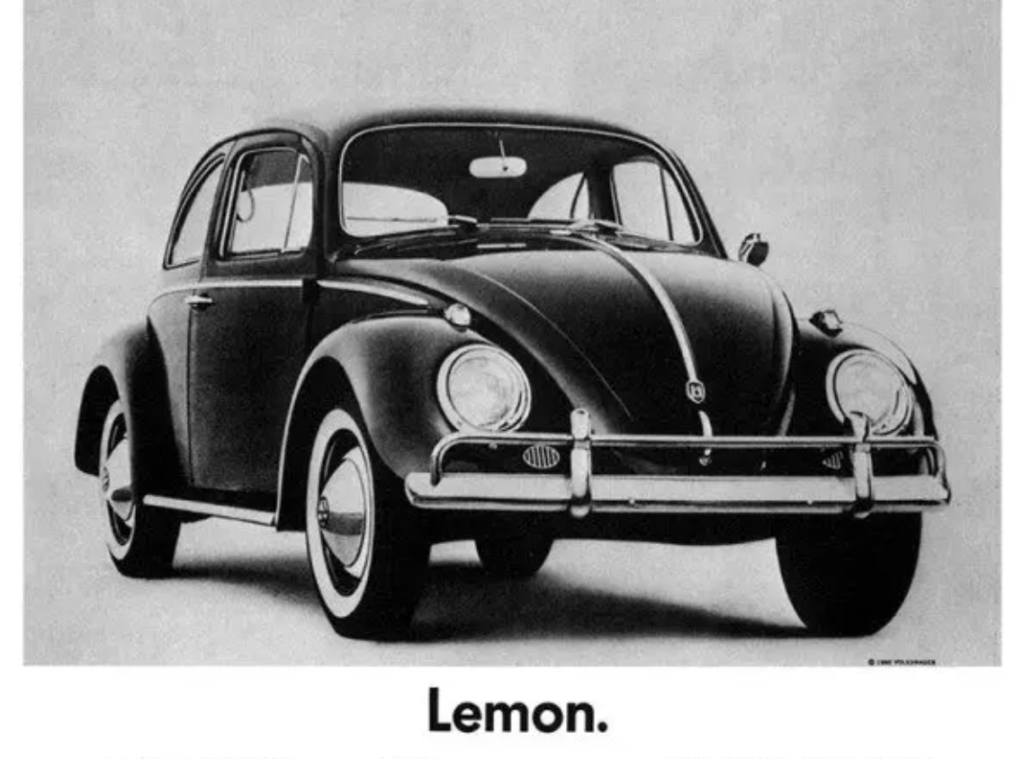You walk into the supermarket, list in hand, determined to stick to your budget.
First stop: the milk aisle.
You spot your usual brand, ready to grab it, but then—bam!—a big, bold sign catches your eye: “Limited Time Offer – Buy 1, Get 2!”
For a second, you’re pumped… until you realize it’s not for your brand.
Now what?
Should you stick to what you know, or score two cartons for the price of one with the other brand? You hesitate, weighing your options.
Then you notice the new brand’s packaging: 100% Pasture Raised, Organic, Low Fat.
That’s all it takes! A great price, healthy, and low-fat?
You toss the other brand into your cart, feeling pretty good about your choice and the savings you just scored.
—
What just happened?
That, my friends, is the power of persuasive advertising.
The kind that doesn’t just tell you about a product but taps into the psychological triggers that make you feel like you need it right now.
As marketing leaders, understanding the psychology behind these persuasive techniques is important if you want your ads to cut through the noise and lead to real action.
So, let’s dive into some actionable strategies you can use to make your ads irresistible—and high-converting.
Six Human Psychology Principles You Need To Know
Before anything, let’s get one thing clear, persuasion isn’t manipulation.
It’s about using proven psychological principles to encourage people to take action, whether that’s making a purchase, signing up for a webinar, or downloading a whitepaper.
Best-selling author and psychologist Robert Cialdini outlined six principles of persuasion that are still rock-solid today: reciprocity, scarcity, authority, consistency, liking, and social proof.
But how do these work in ads? Let’s break it down.
1. Reciprocity – You Give Some, You Win Some
People tend to return favors.
Offering something valuable upfront, like a free downloadable ebook, a discount, or exclusive content creates a sense of obligation. That small gift builds goodwill, and customers feel more inclined to give back in the form of a purchase or signup.
What You Can Do:
Offer something high-value but at a low cost. For instance, a well-designed guide, a free consultation, or even a small discount on a customer’s first purchase. You can say, “Sign up for a free trial, and get exclusive access to our premium features.”
2. Scarcity – The FOMO Factor
Humans hate missing out.
If people think something is in short supply or only available for a limited time, they’re far more likely to act quickly. Scarcity creates urgency, and urgency converts.
Like in the supermarket example above, the sign for milk said “Limited Time Offer.” Knowing the offer won’t be around for long urges people to decide right away. Just keep in mind that people aren’t dumb, scarcity works best when it feels real. Be strategic about the words you use in your ads.
What You Can Do:
Make use of limited-time offers, countdown timers, or phrases like, “Only a few left!” in your ads. Things like “Last Chance” or “Ends Tonight” are also proven to boost conversion rates because people know it won’t be around for long.
3. Authority – Let Them Know You’re the Expert
Humans are hardwired to trust experts.
It’s why we do what doctors say, obsessively check product reviews, and trust testimonials from credible sources. If your brand can show itself as an authority, people are likely to follow your lead and trust that you know what you’re talking about.
What You Can Do:
Add certifications, expert testimonials, or award badges in your ads. For instance, showing a satisfied customer review or a partnership with a respected industry figure gives your brand the credibility boost it needs. For example, “Trusted by Forbes” or “Rated #1 by X” adds serious authority.
4. Consistency – Align with Your Audience’s Beliefs
People like things to be consistent.
Once they’ve aligned themselves with something, they’ll stick with it. Consistency isn’t just about following through—it’s about connecting with your audience’s identity. What do they care about? What values do they want to see reflected in the brands they choose?
This means if you can align your message with values your audience already holds, they’ll engage and convert. The key is to connect with their previous behaviors or expressed beliefs.
What You Can Do:
Shape your messaging so it matches your customer’s values or past actions. Something like, “Join the Movement for Sustainable Living” taps into this desire for consistency and collective action.
5. Liking – Be Human and Relatable
People like to do business with brands and companies they like.
Brands that feel human, approachable, and relatable are more likely to succeed than those that are sterile and cold. The more you can present your brand as friendly and trustworthy, the more people will feel comfortable engaging with you.
What You Can Do:
Get creative with this. Now that social media is integrated with marketing, this is a lot easier to do. Show how a product is made or introduce some of your employees and how they work. Use conversational language in your ads or inject humor to break down the brand-customer barrier.
6. Social Proof – Follow the Crowd
People instinctively look to others to guide their decisions.
If we see others are using and loving a product, we’re more likely to want it too. That’s why social proofs like reviews, authentic testimonials, influencer marketing, and UGCs (User Generated Content) are huge conversion drivers.
What You Can Do:
Put user reviews, case studies, or influencer endorsements in your ads. “20,000 people can’t be wrong!” or “As seen on…” statements help build trust fast. Display logos of well-known companies you’ve worked with or industry awards you’ve won. Even something as simple as a star rating from happy customers can push people over the edge.
The Emotional Hook: Why Emotional Ads Convert Better
You’ve seen it, ads that pull at your heartstrings, make you laugh, or give you a serious case of the feels. These aren’t just feel-good moments; they’re human psychological triggers at work. Ads that tap into emotions like joy, fear, excitement, or nostalgia don’t just capture attention—they move people to act.
What You Can Do:
Add emotional appeal to your ads by using visual storytelling. Show a customer’s journey, share a relatable problem, and offer the solution in a way that evokes an emotional reaction.
Examples of Using Emotional Advertising:
World Wildlife Foundation or World Wild Fund for Nature (WWF)

WWF (World Wild Fund For Nature) knows how to make someone feel it in the gut. If you’re an animal lover, chances are, you won’t look past this ad without feeling something. The company isn’t afraid to trigger fear, even outrage, in their target audience to compel them to take action.
Gatorade

Gatorade uses emotional storytelling in its creative ad featuring Usain Bolt. Creating the ad in a vibrant and colorful animated style also takes advantage of color psychology.
Some people watch this short film and miss the fact this was an ad for Gatorade because it focuses on Usain Bolt’s story. But this is a genius move on the company’s part, they’re subtle about their partnership and wanted to highlight Bolt’s success story.
After they’ve successfully triggered a positive emotion, Gatorade’s subtle branding shows up near the end, and guess what emotions your brain will associate with the brand then? Yup, that good, motivational feeling you felt after watching the film. It’s quite genius.
Watch the full film HERE
Volkswagen

An oldie but a true goodie, Volkswagen’s ad changed American advertising forever. Although they’ve faced considerable backlash in recent years, when the VW Beetle was first introduced to America, the brand quickly became a favorite thanks in big part to its unique, self-deprecating form of psychological advertising. You can read more about this fascinating foray here.
Nail Your Call to Action (CTA) – Making The Final Push
The CTA is where your ad either converts or falls flat. A strong call to action is clear, actionable, and often urgent. Whether it’s “Sign up now,” “Get your discount,” or “Shop today,” it needs to be the final nudge your audience needs to go from just reading your ad and scrolling off or clicking on the button to buy or sign up.
What You Can Do:
Keep your CTA short, sweet, and action-focused. Use strong verbs that direct action like “Get,” “Buy,” or “Start.” And if you can, push for urgency—“Start your free trial today” or “Limited seats available—register now!”
Test and Optimize for Maximum Results
Think you’ve nailed your ad? Don’t stop there. A/B testing is the next step to figuring out what works best with your audience.
You might be surprised how small changes like a new headline, a different image, or a CTA button in another color, can improve conversions.
Things to Avoid in Persuasive Advertising
As powerful as persuasion is, it can backfire if done poorly. So, be strategic and smart about how you apply it. Keep these common mistakes in mind:
- Overloading with too much information – Keep it simple. Ads need to be concise and to the point. Don’t put in too many details.
- Being too pushy – Urgency is essential, but being too aggressive can turn people off. Focus on creating value instead of pressure.
- Ignoring audience segmentation – A one-size-fits-all ad won’t work for everyone. Tailor your messaging to specific customer personas for maximum impact.
Wrapping Up
Crafting persuasive ads is both an art and a science. It’s no mambo jumbo but instead rooted in psychological principles that influence human behavior.
When you use the power of reciprocity, scarcity, authority, consistency, liking, and social proof, along with emotional triggers and clear CTAs, you can create ads that attract attention and drive conversions.
It’s your turn to put these psychological principles to work.
Take a look at your current campaigns and ask, where can you implement these tactics to improve performance?
With a few tweaks and a deeper understanding of consumer psychology, you’ll be well on your way to crafting high-converting ads that truly resonate with your audience.
—-
Struggling to create ads that really hit the mark? We’ve got you covered! Grab our FREE guide, 101 Advertising Mastery Tips, and start leveling up your ad game.
Need more hands-on help? Nicole Steffen Design has your back with branding, creative direction, and expert marketing support. Book a no-obligation 30-minute call today, and let’s brainstorm how to make your ads (gasp) pop!




